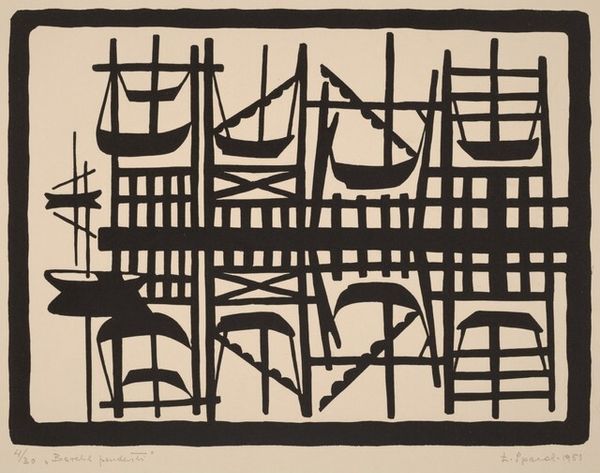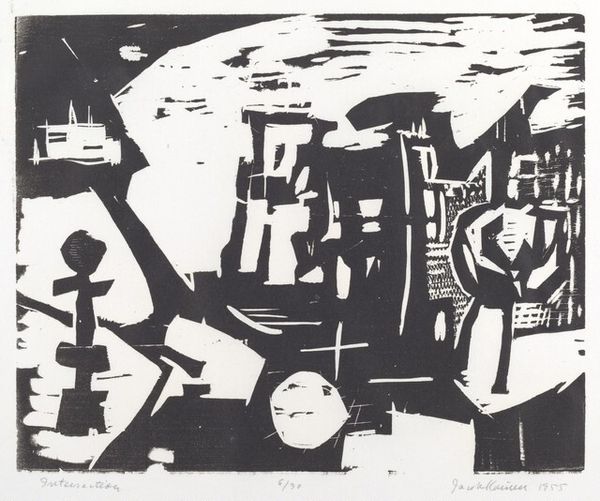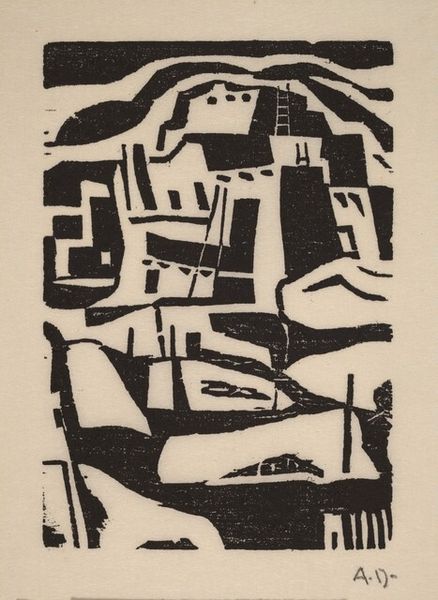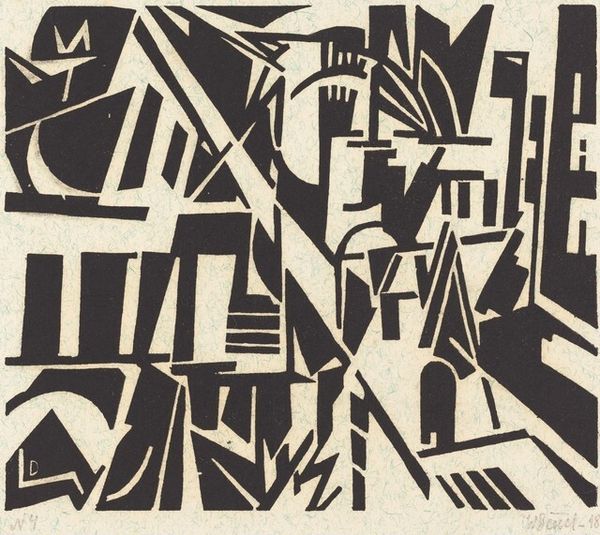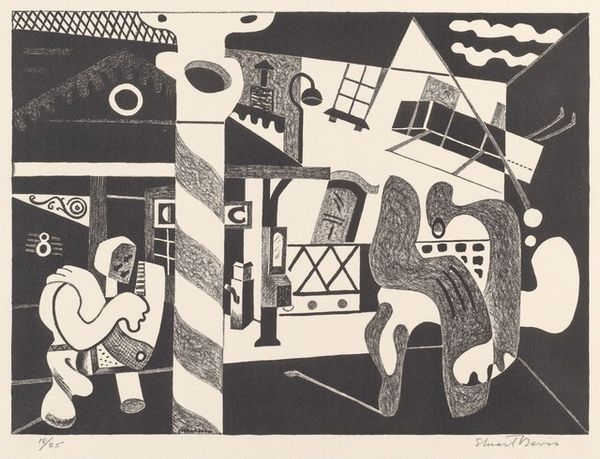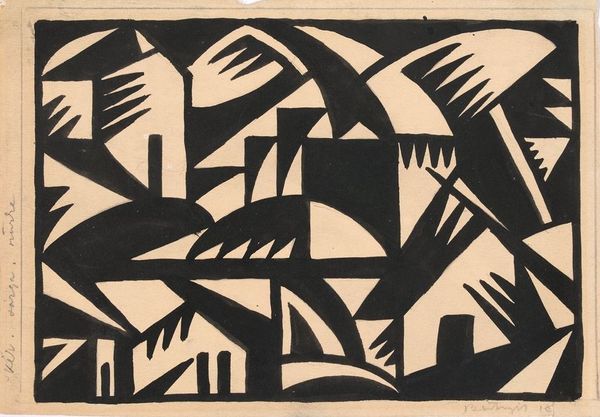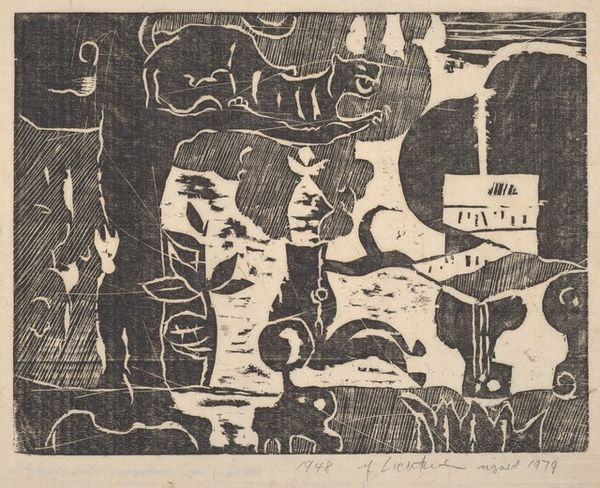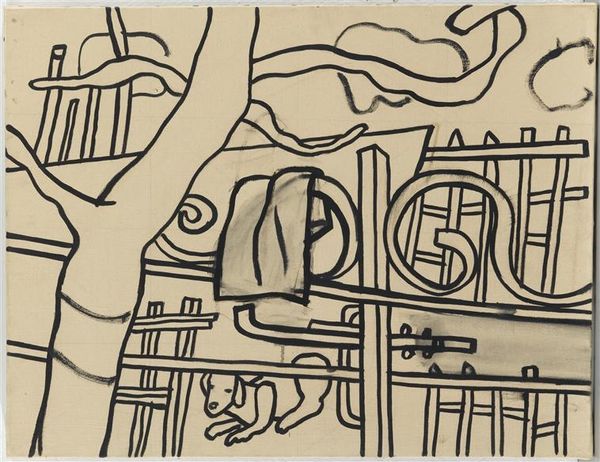
#
cubism
# print
#
geometric
#
cityscape
#
modernism
Dimensions: image: 30.48 x 45.72 cm (12 x 18 in.) sheet: 43.18 x 58.42 cm (17 x 23 in.)
Copyright: National Gallery of Art: CC0 1.0
Editor: We’re looking at Stuart Davis' "Sixth Avenue El" from 1931, a print in black and white. The geometric shapes and abstract figures make the city look both chaotic and strangely still. What story do you think this piece is telling? Curator: I see a representation of modern urban life through the lens of a society rapidly transforming. Notice how Davis fragments familiar elements—architectural details, signage, perhaps even figures—dissecting and reassembling them in a flattened space, reminiscent of Cubist strategies. The "El," the elevated train, becomes a metaphor for progress, and the alienation modern progress often brings. How does its starkness resonate with you in thinking about the period between the wars? Editor: I can see that. It feels almost like he’s taken the city and broken it down into its simplest forms. How does its being a print influence its interpretation? Curator: As a print, "Sixth Avenue El" democratizes art, making it more accessible in the 1930s, a time when the art world was often perceived as elitist. Also, the black and white palette heightens the sense of starkness, reflective of social and economic realities of the Depression era, shaping public sentiment through its visuals. It reflects the anxieties and the rhythms of an industrial society. What would happen if we rendered this same scene in color? Editor: That's interesting! Putting it that way, it feels much more like a conscious choice by Davis, the way the composition speaks about accessibility. Thank you! Curator: And thank you! Considering these angles only enriches our experience of how art impacts society.
Comments
No comments
Be the first to comment and join the conversation on the ultimate creative platform.
